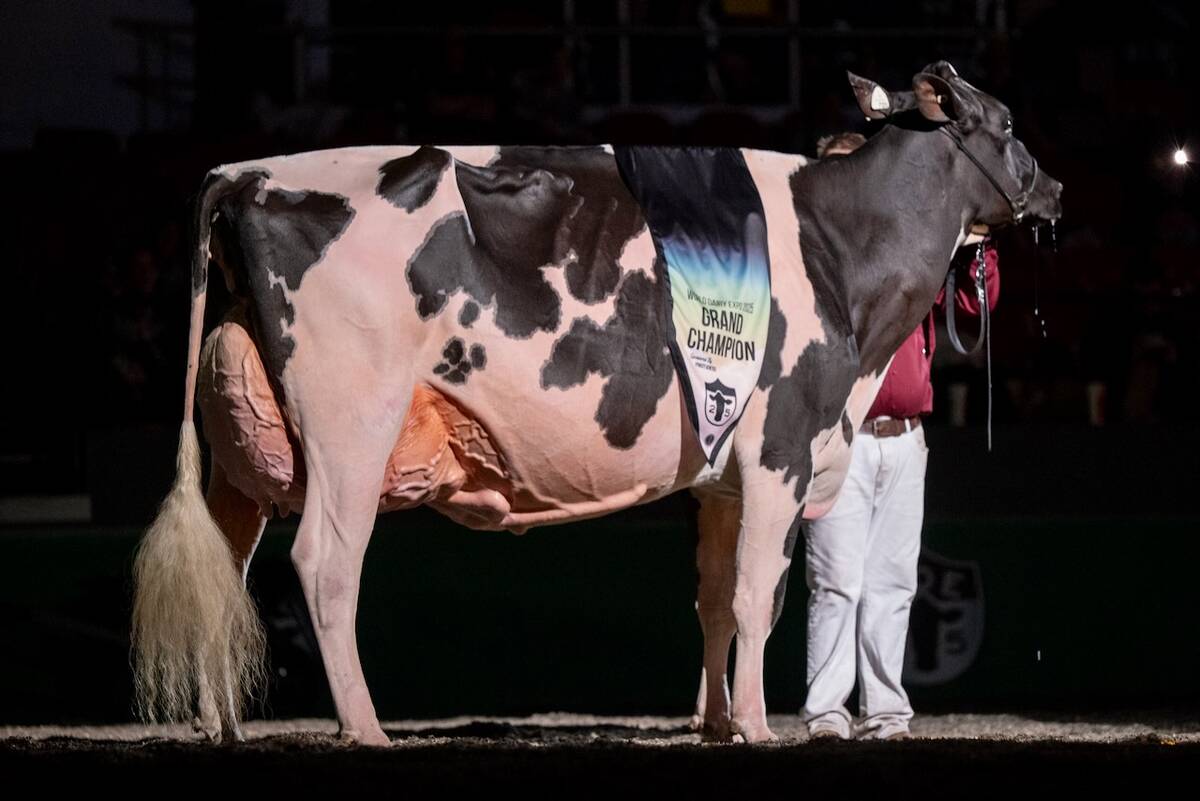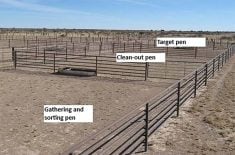Few tie stall barns remain on western Canadian dairy farms, but producers might have to make calf housing changes
Most dairy farmers in Western Canada will feel minimal effects from changes to the national Code of Practice for the Care and Handling of Dairy Cattle.
However, farmers with tie stalls may need to make some changes.
The main effects of the changes that come into effect April 1, 2024, are around tethering of cows and calves.
“Many farmers already meet the requirements,” says David Wiens, a Manitoba dairy farmer who was elected president of Dairy Farmers of Canada in July. “Many farms will have absolutely minimum changes.”
Read Also

Canadian-bred cow wins World Dairy Expo Holstein show
A cow bred in Saskatchewan, Lovhill Sidekick Kandy Cane, is the Grand Champion Holstein at the 2025 World Dairy Expo.
Some will have to make plans over the next several years to meet the code requirements, he says.
Cows housed in tie stalls — in which they are tethered to the stall — will need to have freedom of movement for at least some part of the day as of April 2027. Initially, tie stalls developed when cows were grazed and then brought into the stalls for milking and some feeding.
As dairy production intensified, including more precise feeding methods that levelled out the variability in intake from pasture, cows were kept in tie stalls in many parts of the country all the time, and the feed was brought to them. Some tie stall farms permit cows to have seasonal access to pastures.
Most new barns in the country are now free stall or pack barns, where cows have the freedom to move around all the time, other than when being milked.
The good news for dairy farmers in Western Canada is that most of them have moved to free stall systems.
According to the Canadian Dairy Information Centre, in 2022, there were only six tie stall farms in British Columbia, 10 in Alberta, six in Saskatchewan and 29 in Manitoba.
That compares to 1,185 tie stall farms in Ontario and 2,481 in Quebec. Even with the much higher dairy farm numbers in Eastern Canada, the percentage of tie stall farms in Ontario is still more than half and in Quebec, two-thirds.
Those farms may still exercise their cows daily and that will mean they still meet the new code requirements, but for those that do not, change is necessary.
The code of practice for the care and handling of dairy cattle was revised in 2009, and is usually updated every 10 years. The current update process was started in 2019 and took four years to complete.
The codes of practice for animal care are administered by the National Farm Animal Care Council, which brings together farmers, researchers, veterinarians and animal welfare organizations.
The NFACC says it received submissions from almost 6,000 individuals or groups during the public consultation for the code. Forty percent identified as dairy producers, just over 31 percent were concerned citizens or animal welfare advocates, and just over 17 percent identified as consumers.
Code of practice changes become mandatory for dairy farmers as part of the industry’s quality assurance program proAction.
Further out than requirements for cow movement are requirements around calf housing and cow stocking density.
By 2031, calves will be required to be housed in groups or pairs by four weeks of age. If they’re housed outdoors or in hutches, they may only be tethered if they can move in and out of the hutch. They must also be able to have physical contact with another calf, unless they need to be separated for health and safety reasons.
Allowed stocking density for cows will decrease to 1.1 cows per stall in a free stall system from 1.2 cows per stall, as of April 2027. As of April 2031, that will be reduced to one cow per stall.
Wiens says many farmers already meet or exceed this stocking density requirement. There is some flexibility for farmers who have higher stocking density because of expansion or seasonal calving fluctuation.
“There might be certain periods of time when they might be over 100 percent stock density, but at the same time, fall back to it for most of the year.”
At the Wiens farm near Grunthal, Man., where David and his brother Charles milk 230 cows, there will be little need for change.
“We went to social group housing for calves 20 years ago. We went from a tie stall to a robotic milking free stall barn in 2008, so many of those changes have already been made.”
With files from Geralyn Wichers.















